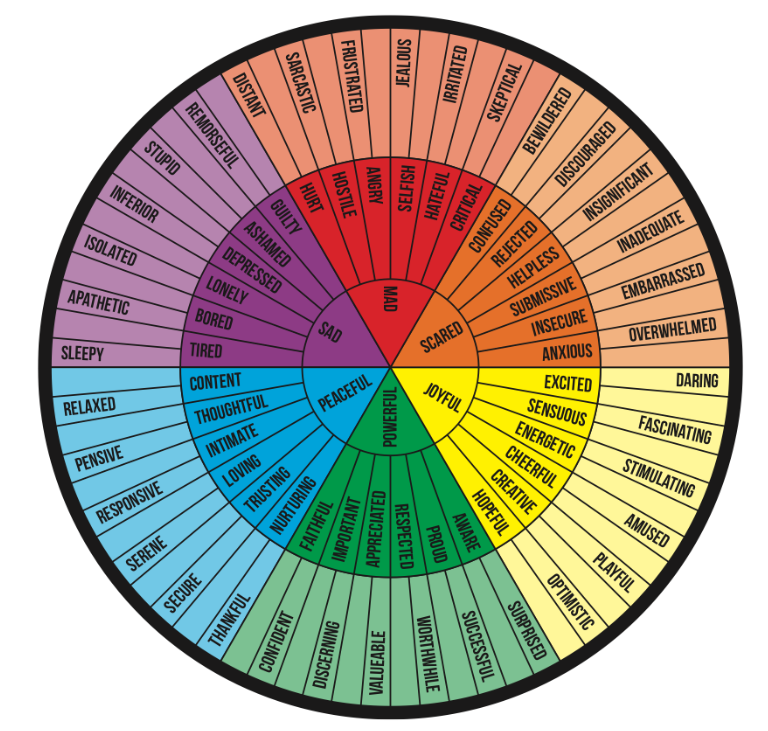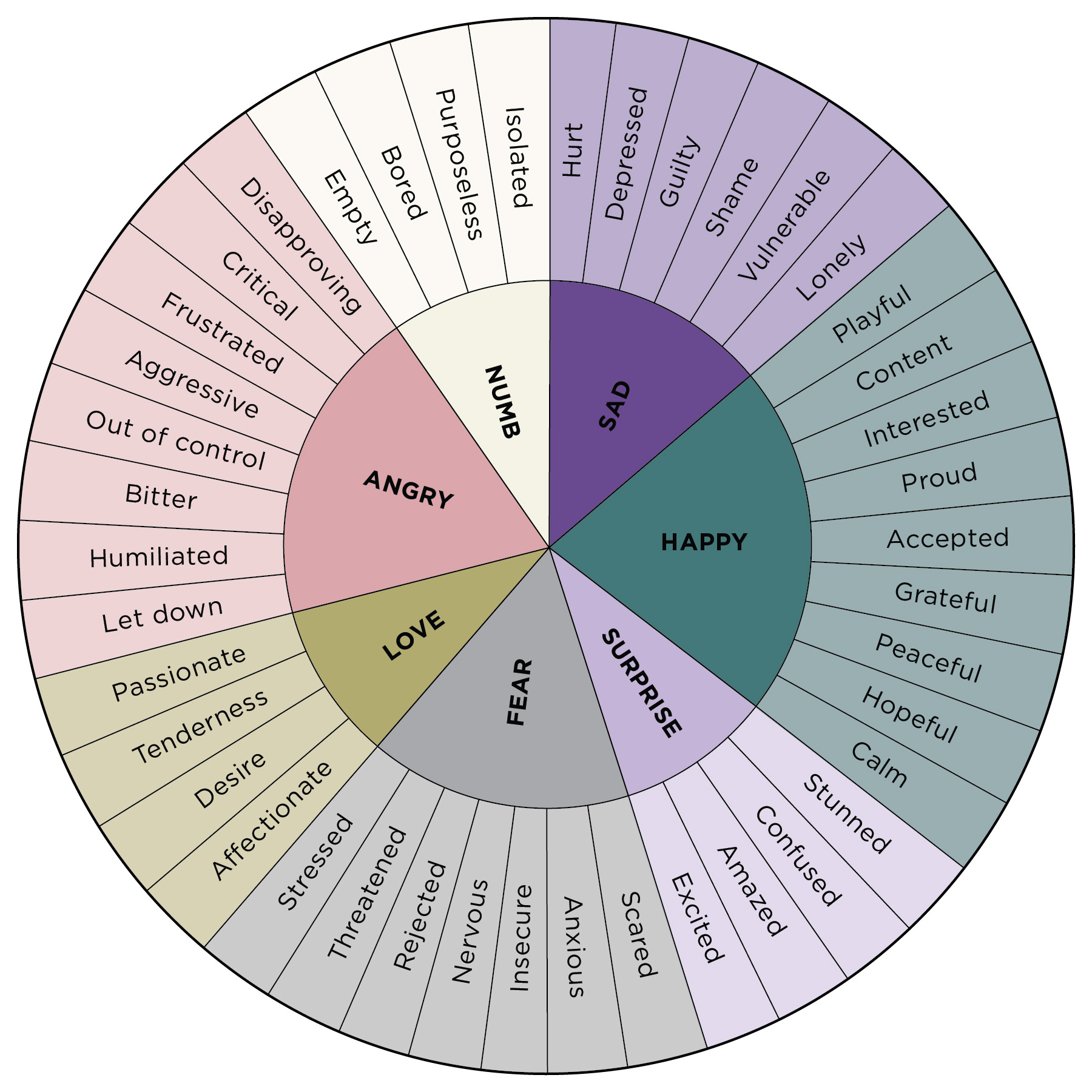

This is an easy way to visualize the strength of an emotion. As the intensity of the emotion is diminished, the color appears a little more faded in the wheel. The eight emotions have a color assigned to them. See how anger is represented in the center by rage.Ĭolors. They’re so intense that the innermost layer even goes beyond the core emotion. The layers give you more mild emotions at the outside of the wheel, and then the emotions intensify toward the center. It’s divided into layers, it features different colors, and there are relations between the emotions.

But three things will jump out at you from the wheel. Once you start examining the emotion wheel, you instinctively start pairing and dissecting emotions. The idea is to look at the wheel and try to determine what your core emotion is, then to move out and around from that area to find layers and nuances of your feelings. This is a wheel centered around eight core emotions that can intensify, become milder, and can combine together to produce new emotional states. Psychologist Robert Plutchik developed the Plutchik Model of Emotions. With that many different emotions and levels of feelings, how are you actually supposed to figure out what you’re feeling? The emotion wheel helps you do just that. On average, humans have about 34,000 emotions. Emotions are very interesting things and can be hard to navigate. One person might be elated that their idea really was so good, and they feel validated as well. They’re going to have some different emotions than you would.

Not only that, but let’s say the exact same situation happened to another person. In our imaginary situation, you’re going to have many different emotions, ones that compete with others then there are those that overlap, and maybe even some you’ve never felt before. Betrayal? Sadness? Frustration? Maybe there’s even a little relief because the idea of being a hero forever was a bit overwhelming? But there has to be more than that involved. How does something like that make you feel? Anger, obviously. You guessed it, right? He stole your idea and presented it as if it were his own. In fact, he tells you he’s going to work out some issues, discuss them with upper management and get back to you next week.īefore the week is over, you get a memo announcing your boss has been promoted to head a new revolutionary project. You do the right thing and tell your boss about it, and he loves the idea. Picture this - you’ve come up with a great idea at work, something revolutionary that’s definitely going to bring your company more money and earn you a promotion, and at the same time guarantee your hero status for life.
#Emotion wheel how to


 0 kommentar(er)
0 kommentar(er)
